+Search query
-Structure paper
| Title | Cryo-EM structures of complex I from mouse heart mitochondria in two biochemically defined states. |
|---|---|
| Journal, issue, pages | Nat Struct Mol Biol, Vol. 25, Issue 7, Page 548-556, Year 2018 |
| Publish date | Jun 18, 2018 |
 Authors Authors | Ahmed-Noor A Agip / James N Blaza / Hannah R Bridges / Carlo Viscomi / Shaun Rawson / Stephen P Muench / Judy Hirst /  |
| PubMed Abstract | Complex I (NADH:ubiquinone oxidoreductase) uses the reducing potential of NADH to drive protons across the energy-transducing inner membrane and power oxidative phosphorylation in mammalian ...Complex I (NADH:ubiquinone oxidoreductase) uses the reducing potential of NADH to drive protons across the energy-transducing inner membrane and power oxidative phosphorylation in mammalian mitochondria. Recent cryo-EM analyses have produced near-complete models of all 45 subunits in the bovine, ovine and porcine complexes and have identified two states relevant to complex I in ischemia-reperfusion injury. Here, we describe the 3.3-Å structure of complex I from mouse heart mitochondria, a biomedically relevant model system, in the 'active' state. We reveal a nucleotide bound in subunit NDUFA10, a nucleoside kinase homolog, and define mechanistically critical elements in the mammalian enzyme. By comparisons with a 3.9-Å structure of the 'deactive' state and with known bacterial structures, we identify differences in helical geometry in the membrane domain that occur upon activation or that alter the positions of catalytically important charged residues. Our results demonstrate the capability of cryo-EM analyses to challenge and develop mechanistic models for mammalian complex I. |
 External links External links |  Nat Struct Mol Biol / Nat Struct Mol Biol /  PubMed:29915388 / PubMed:29915388 /  PubMed Central PubMed Central |
| Methods | EM (single particle) |
| Resolution | 3.3 - 3.9 Å |
| Structure data | |
| Chemicals | 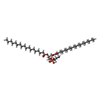 ChemComp-3PE:  ChemComp-SF4: 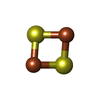 ChemComp-FES: 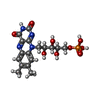 ChemComp-FMN: 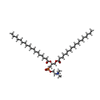 ChemComp-PC1: 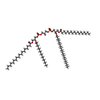 ChemComp-CDL:  ChemComp-ADP: 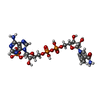 ChemComp-NDP:  ChemComp-ZN: 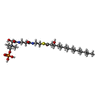 ChemComp-EHZ:  ChemComp-ACE: |
| Source |
|
 Keywords Keywords | OXIDOREDUCTASE / Complex I / mitochondria / proton pump / membrane protein |
 Movie
Movie Controller
Controller Structure viewers
Structure viewers About Yorodumi Papers
About Yorodumi Papers








